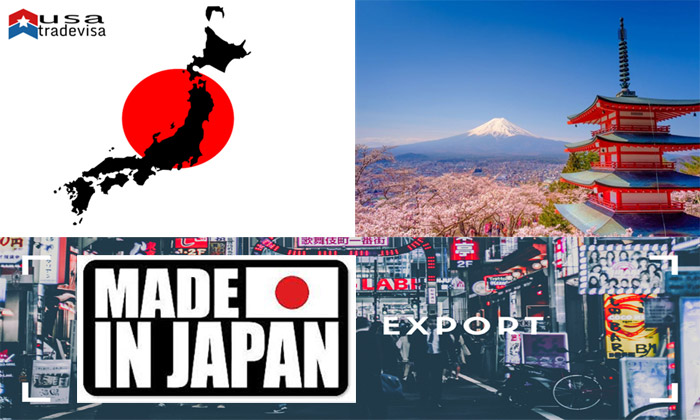Country Analysis of Japan
Japan Foreign Trade
Japan is the fourth biggest exporter country in the world. the country population is 126 million, a gross domestic product of $ 4.95 trillion, the economy based on strong industrial companies and its world-renowned brands. Japan is also the fourth most importing country in the world. Although the ranking of the importer countries varies, those in the top three are again the US, China and Germany.
According to 2018 data, Japan has a foreign trade deficit of 10 billion USD. japan totall exporting is 738 billion but the importing products takes 748 billion.
Japan was a country that exported 400 billion USD at the beginning of 2000s and had a foreign trade surplus of about 50 billion USD. Since 2002, the country's exports have increased by almost 50 billion USD every year. The global crisis of 2008-2009 led to a 200 billion USD drop in Japan's exports. However, the country's economy recovered in 2010 and the crisis was compensated for by an increase of USD 200 billion.
We see that Japanese exports have started to fall again in 2012 and imports have increased continuously. Foreign trade surplus, which fell to 20 billion USD in 2017, turned into a foreign trade deficit as of 2018.
When the export-import figures of Japan's service products are analyzed, it is seen that imports of services amounted to 190 billion USD despite the export of 184 billion USD. Foreign trade deficit in services sector 6 billion USD.
Economy of Japan
During the 60s, the Japanese economy grew by 10% each year and by 5% each year in the seventies. In the 80s, the country, which became the second largest economy in the world after the US, fell behind China in the 90s and 2000s.Japan is a country that lacks energy sources such as oil and natural gas, and about 25% of its imports are due to these products. 18% of Japanese economic production, ie, Gross Domestic Product, originates from exported goods and services.
GDP, which was 4.84 trillion in 2017, amounted to USD 4.95 trillion in 2018. In 2018, despite a 5.5% increase in exports, imports increased by 12%.
In Japan, 70% of employment is in the service sector, 24% in the industrial sector and 3.5% in the agricultural sector. Only 11% of Japan is suitable for agriculture, but the agricultural sector is protected by incentives.
Japan exports mainly to China and South Korea and 58% of its exports to Asian countries. The United States and the North American continent, which includes Canada, are the second largest export destination with 22%. With the laws and regulations pioneered by the European Union, Germany and France, it makes the export of Japanese automotive and machinery products particularly difficult. Japan's exports to European Union member countries are 13% of its total exports.
Japan's Most Exported Countries
- China: 143 billion USD
- USA: 140 billion USD
- South Korea: 52 billion USD
- Taiwan: 42 billion USD
- Hong Kong: 34 billion USD
- Thailand: 32 billion USD
- Singapore: 23 billion USD
- Germany: 20 billion USD
- Australia: 17 billion USD
- Vietnam: 16 billion USD
Most Exported Japan Products
About 40% of Japan's exports are based on automotive and machinery exports. With little land and energy resources limited to agriculture, Japan has an economy based primarily on industrial products.- Cars and motor vehicles: 154 billion USD
- Machinery, mechanical tools and parts: 148 billion USD
- Electrical machinery and equipment: 109.3 billion USD
- Optical, technical, medical devices: 41.3 billion USD
- Iron and steel: 29.9 billion USD
- Plastic products: 26.1 billion USD
- Organic chemicals: 18.9 billion USD
- Oil, natural gas, mineral fuels: 13.3 billion USD
- Ships, yachts, boats: 12.6 billion USD
- Precious metals: 12 billion USD
Top Japanese Companies and Brands
The Japanese companies in this list are also the most important export companies of Japan. Japan has brands that are sold in many countries of the world, especially in the automotive industry.- Toyota Motor (automotive industry)
- Kubota (tractor, bucket, agricultural and construction vehicles)
- Honda Motor (automotive industry)
- Denso (automotive parts)
- Japan Tabacco (tobacco industry)
- Nissan Motor (automotive industry)
- Canon (business products, supplies)
- Takeda Pharmaceutical (pharmaceutical and medical products)
- Mitsubishi Electric
- Hitachi (electronic products)
- Nippon Steel (iron and steel)
- Fanuc (industrial products)
- Astellas Pharma (pharmacy)
- Panasonic (electronic products)

















COMMENTS